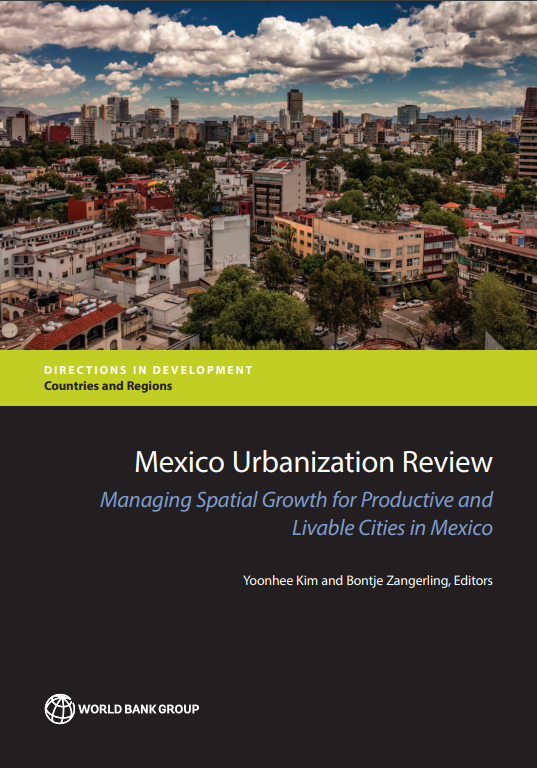Mexico Urbanization Review
Editorial: The World Bank Group
Licencia: Creative Commons (by)
Autor(es): Kim, Yoonhee y Zangerling, Bontje
Despite impressive economic growth and increasing prosperity, cities in Mexico do not seem to have fully captured the benefits of urban agglomeration, in part because of rapid and uncoordinated urban growth. Recent expansion of many Mexican cities has been distant, disconnected, and dispersed, driven mainly by large single-use housing developments on the outskirts of cities. The lack of a coordinated approach to urban development has hindered the ability of cities in Mexico to boost economic growth and foster inclusive development. It also has created a fissure between new housing developments and urban services, infrastructure, and access to employment. Mexico Urbanization Review: Managing Spatial Growth for Productive and Livable Cities in Mexico provides an analytical basis to understand how well-managed urban growth can help Mexican cities to capture the positive gains associated with urbanization. To this end, the authors analyze the development patterns of the 100 largest Mexican cities using a set of spatial indexes. They then examine how the recent urban growth has affected the economic performance and livability of Mexican cities and offer recommendations for adjusting urban policy frameworks and instruments in ways that support sustainable spatial development and make cities more productive and inclusive.
[Washington: 2016]
Compartir:
Una vez que el usuario haya visto al menos un documento, este fragmento será visible.


